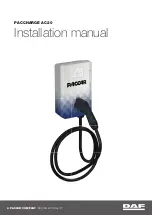
When properly installed, a rear-
facing child seat may prevent the
driver or a front passenger from
moving their seat as far back as
recommended, or from locking their
seat-back in the desired position.
Two types of seats may be used: a
seat designed exclusively for infants,
or a convertible seat used in the rear-
facing, reclining mode.
If placed
facing forward, an infant could be
very seriously injured during a
frontal collision.
A rear-facing child seat can be placed
in any seating position in the back
seat, but not in the front.
If the passenger’s front airbag
inflates, it can hit the back of the
child seat with enough force to kill or
seriously injure an infant.
An infant must be properly
restrained in a rear-facing, reclining
child seat until the child reaches the
seat maker’s weight or height limit
for the seat, and the child is at least
one year old.
Only a rear-facing child seat provides
proper support for a baby’s head,
neck, and back.
It could also interfere with proper
operation of the passenger’s
advanced front airbag system.
CONTINUED
Protecting Inf ants
Child Seat Type
Do not put a rear-f acing child seat in
a f orward-f acing position.
Never put a
rear-f acing child seat in the f ront
seat.
Rear-f acing Child Seat Placement
Protecting Infants and Small Children
Dr
iv
er
and
P
asseng
er
Saf
e
ty
43
10/09/02 13:47:09 31TM8610_048
Summary of Contents for 2011 Insight
Page 6: ...10 09 02 13 41 36 31TM8610_005 ...
Page 64: ...U S models Canadian models Safety Labels 58 DOORJAMBS 10 09 02 13 49 13 31TM8610_063 ...
Page 354: ...348 10 09 02 14 25 46 31TM8610_353 ...
Page 404: ...398 10 09 02 14 32 01 31TM8610_403 ...
Page 450: ...444 10 09 02 14 37 37 31TM8610_449 ...
















































